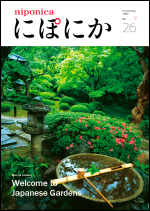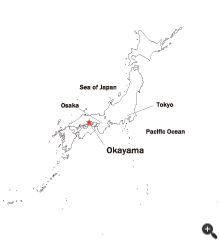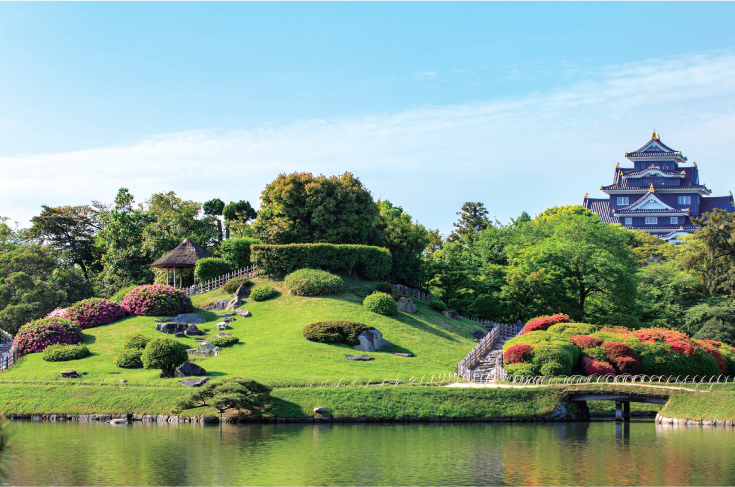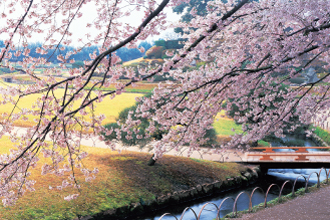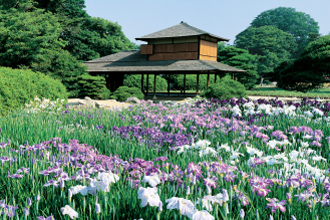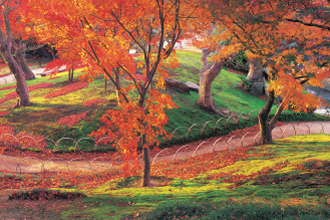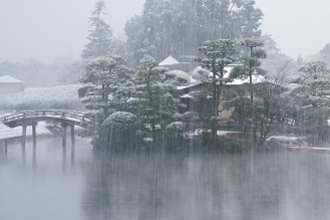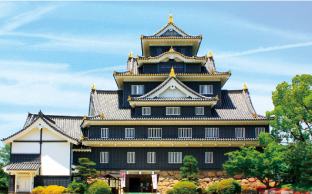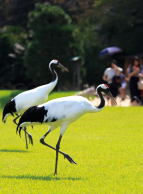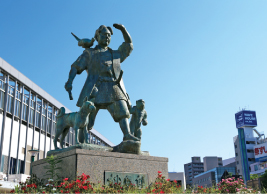niponica is a web magazine that introduces modernJapan to people all over the world.
2019 NO.26
 Strolling Japan
Strolling Japan
Text: Ishizuka Tokie
Photographs: Okayama Prefectural Tourism Federation, Yukio NAMBA, Yumeji Art Museum Honkan, Manekineko Art Museum
Known by the pleasant catchphrase “the Land of Sunshine,” Okayama is a castle town that harmoniously combines history and tradition with an abundance of nature, including Okayama Castle and Korakuen - one of Japan's “Three Great Gardens.” It also sets the stage for the famous Japanese fairytale of Momotaro - the story of a boy born from a peach, who grew up to defeat demons.
The component structures of Okayama Castle were completed in 1615 and served as the residence for local Daimyo (feudal lords) throughout the Edo period (17th century - 19th century). The black-painted castle boasts an impressive exterior appearance and is also known as Ujo (Crow Castle). The top floor affords a sweeping view of Okayama City.
Korakuen is a vast garden built in 1700 by the local Daimyo. It has been designated a particularly valuable “special place of scenic beauty” - a classification with particularly high value that constitutes one type of Japan's national cultural property. Within the gardens are the remains of Japanese structures such as the Daimyo's living quarters and a Noh stage (traditional Japanese theater) which allow you to enjoy a Japanese ambiance from season to season, starting with the cherry blossoms in the spring, the lotus in the summer, the foliage in the fall, and the camellia in the winter. From spring to fall Korakuen is also open at night when you can enjoy a variety of events, including the garden's illuminations. The red-crowned crane is an iconic bird of Japan, and eight of them have been bred in the gardens and add yet more beauty to the landscape from January to April when their red heads and white feathers are most vivid.
Spring. Korakuen is also a well-known venue for cherry blossoms. Every year it is packed with lots of visitors who come to view the blossoms.
Okayama Castle is known as the black castle, due to the black lacquer painted on the boards of its outer walls.
Red-crowned cranes bred within the garden. Every year, for a limited period you can see them walking around the garden.

